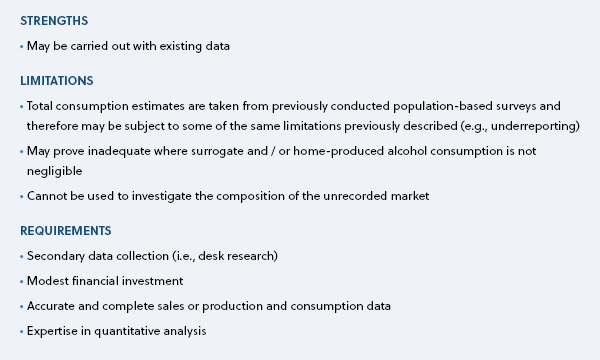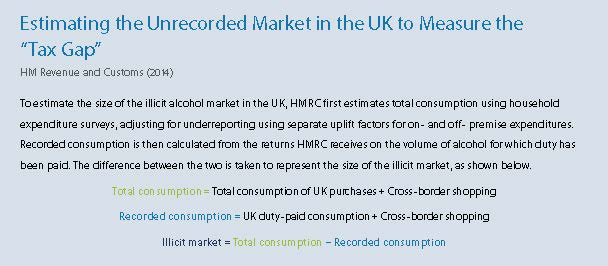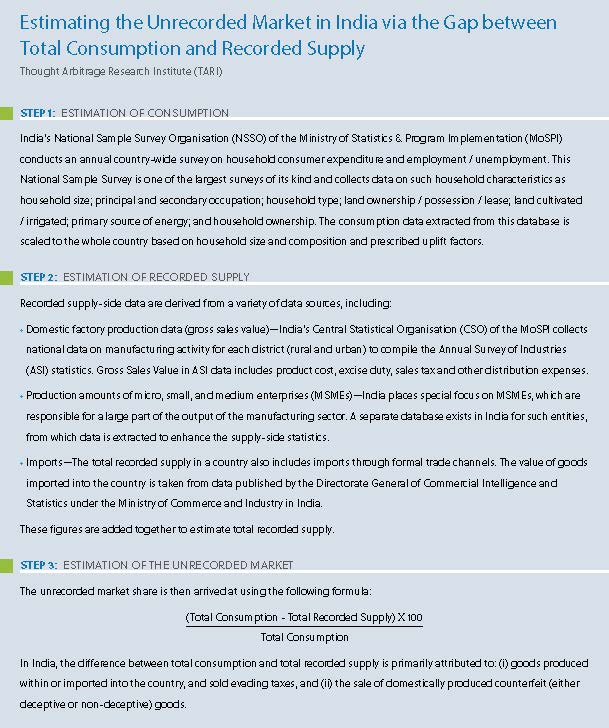What is the size and composition of the unrecorded market?
desk research approaches
What is the size and composition of the unrecorded market?
desk research approaches
Estimating the Gap Between Total Consumption and Recorded Supply


In countries where governments provide total consumption estimates based on household surveys, one desk research approach to sizing the unrecorded market ― but not describing its composition ― is to subtract recorded sales from total consumption. A variant of this approach, as used in the UK to measure the so-called “tax gap,” is described in Illustrative Example A. However, it should be noted that this “tax gap” approach focuses on the illicit market and explicitly excludes legal cross-border shopping from the final estimate.

The primary advantage of the total consumption less recorded sales approach is that it is relatively straightforward and inexpensive to carry out where the required data exist. However, this approach falls short when the collection and maintenance of sales data are not very systematic or streamlined, or when total consumption has not already been estimated from population-based surveys. Moreover, even when the necessary data inputs exist, this approach may prove inadequate where surrogate and/or home-produced alcohol consumption is more than negligible.
Finally, because the total consumption estimate is derived from population-based surveys, the previously identified challenges of survey research discussed in What is the Size and Composition of the Unrecorded Market: Population-Based Surveys remain relevant.
In an approach similar to that described above, the gap between total consumption (also estimated through population-based surveys) and supply (calculated from production, import, and export figures) is used to estimate the size of the unrecorded market. The use of this approach in India is described in Illustrative Example B. Note that India is unusual in that home production is recorded and tracked in official statistics and, therefore, this sub-segment of the market is excluded from the unrecorded estimate arrived at in this application of the method.

